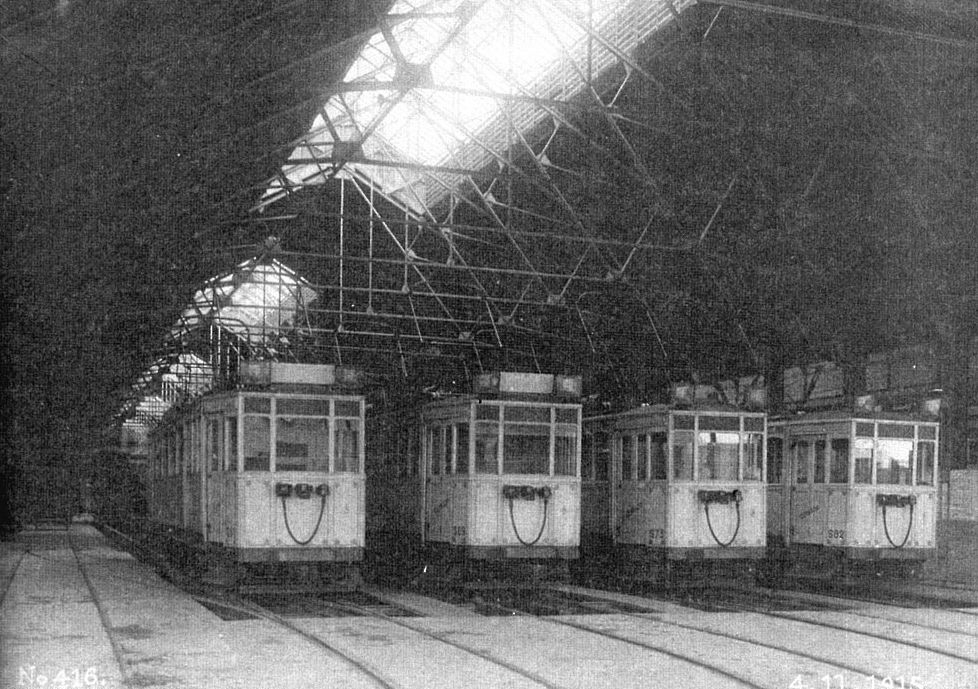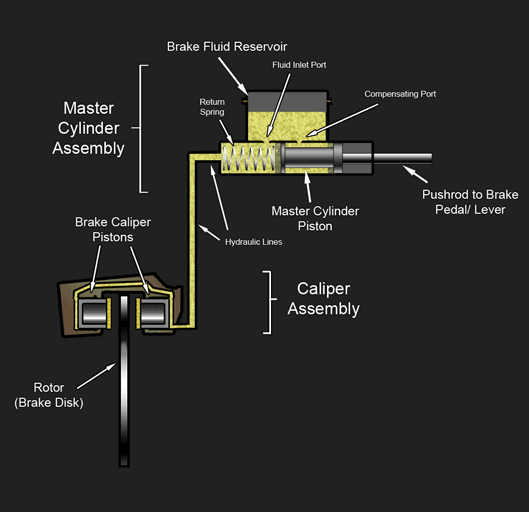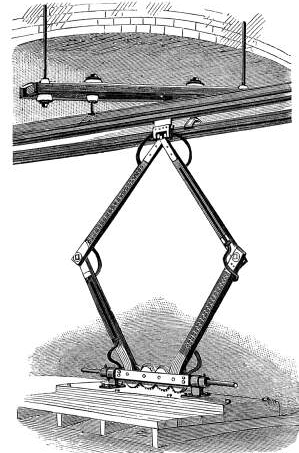|
Nagoya Municipal Subway 5000 Series
The is a rapid transit electric multiple unit (EMU) train type formerly operated by the Transportation Bureau City of Nagoya on the Nagoya Subway Higashiyama Line in Japan from July 1980 until August 2015. Following their withdrawal in Japan, five sets were shipped to Argentina in 2015 for use on Line C of the Buenos Aires Underground. Formation The trains were formed as six-car sets, as follows. One car was designated as a "women-only car" during the morning and evening peak periods on weekdays as a measure to reduce sexual assault during crowded times. History The first trains entered service on 1 July 1980. These were the first air-conditioned trains to be used on the Higashiyama Line. A total of 23 sets were built between 1980 and 1990. Withdrawal and resale The last remaining 5000 series train in service, set 5114, was withdrawn from the Higashiyama Line following a special final run on 30 August 2015. In 2015, five 5000 series units (30 vehicles) were shipped to Ar ... [...More Info...] [...Related Items...] OR: [Wikipedia] [Google] [Baidu] |
Transportation Bureau City Of Nagoya
{{Japan-transport-stub ...
is a municipal government agency responsible for public transport in Nagoya, Japan. The organization operates subways and buses. It was founded in 1922, as an operator of Nagoya City Tram bought from Nagoya Electric Railroad, the current Nagoya Railroad. The bureau sells Manaca, replacing the older Tranpass system. Transportation *Currently operational **Nagoya Municipal Subway **Nagoya Municipal Bus *Discontinued **Nagoya City Tram **Nagoya Municipal Trolleybus **Higashiyama Park Monorail ***Once operated by , an affiliated organization of the bureau. External links Transportation Bureau City of Nagoya official website Government of Nagoya Transport in Nagoya Nagoya is the largest city in the Chūbu region, the fourth-most populous city and third most populous urban area in Japan, with a population of 2.3million in 2020. Located on the Pacific coast in central Honshu, it is the capital and the most pop ... [...More Info...] [...Related Items...] OR: [Wikipedia] [Google] [Baidu] |
Brake-by-wire
In the automotive industry, brake-by-wire technology is the ability to control brakes through electrical means. It can be designed to supplement ordinary service brakes or it can be a standalone brake system. This technology is widely used on all hybrid and battery electric vehicles, including the Toyota Prius. Brake-by-wire is also common in the form of the electric park brake which is now widely used on mainstream vehicles. The technology supplements traditional components such as the pumps, hoses, fluids, belts and vacuum servos and master cylinders with electronic sensors and actuators. Drive-by-wire technology in automotive industry replaces the traditional mechanical and hydraulic control systems with electronic control systems using electromechanical actuators and human–machine interfaces such as pedal and steering feel emulators. Some x-by-wire technologies have been already installed on commercial vehicles such as steer-by-wire, and throttle-by-wire. Brake-by-wire tec ... [...More Info...] [...Related Items...] OR: [Wikipedia] [Google] [Baidu] |
Rolling Stock Of The Buenos Aires Underground
The Buenos Aires Underground has one of the most diverse metro fleets in the world, and has had some of the oldest models in operation on any network. The network began with a relatively standardised fleet, but throughout its over 100-year-long history, it has seen numerous purchases which have created cases where some lines operate numerous models. Recently there have been increased efforts to modernise and standardise the fleets, with large purchases from China CNR Corporation and Alstom. History Before the nationalisation of the railways and the formation of ''Subterráneos de Buenos Aires'', the original lines of Buenos Aires Underground were built by three private companies, and each bought different rolling stock for their lines. Line A was inaugurated in 1913 by the Anglo-Argentine Tramways Company (AATC)—then owned by the Belgian company Sofina—who owned the vast majority of the city's tramways at that point. Two companies competed to provide the rolling st ... [...More Info...] [...Related Items...] OR: [Wikipedia] [Google] [Baidu] |
Nagoya Municipal Subway
The is a rapid transit system serving Nagoya, the capital of Aichi Prefecture in Japan. It consists of six lines that cover of route and serve 87 stations. Approximately 90% of the subway's total track length is underground. The subway system is owned and operated by Transportation Bureau City of Nagoya and, like other large Japanese cities including Tokyo and Osaka, is heavily complemented by suburban rail, together forming an extensive network of 47 lines in and around Greater Nagoya. Of them, the subway lines represent 38% of Greater Nagoya's total rail ridership of 3 million passengers a day. In 2002, the system introduced Hatchii as its official mascot. __TOC__ Lines and infrastructure The six lines that comprise the Nagoya subway network are, for the most part, independent. However, Meikō Line services partially interline with the Meijō Line, and the operations of both lines are combined. Therefore, there are in fact five distinct services on the subway. They are mos ... [...More Info...] [...Related Items...] OR: [Wikipedia] [Google] [Baidu] |
Electric Multiple Units Of Japan
Electricity is the set of physical phenomena associated with the presence and motion of matter that has a property of electric charge. Electricity is related to magnetism, both being part of the phenomenon of electromagnetism, as described by Maxwell's equations. Various common phenomena are related to electricity, including lightning, static electricity, electric heating, electric discharges and many others. The presence of an electric charge, which can be either positive or negative, produces an electric field. The movement of electric charges is an electric current and produces a magnetic field. When a charge is placed in a location with a non-zero electric field, a force will act on it. The magnitude of this force is given by Coulomb's law. If the charge moves, the electric field would be doing work on the electric charge. Thus we can speak of electric potential at a certain point in space, which is equal to the work done by an external agent in carrying a unit of p ... [...More Info...] [...Related Items...] OR: [Wikipedia] [Google] [Baidu] |
Pantograph (rail)
A pantograph (or "pan" or "panto") is an apparatus mounted on the roof of an electric train, tram or electric bus to collect power through contact with an overhead line. By contrast, battery electric buses and trains are charged at charging stations. The pantograph is a common type of current collector; typically, a single or double wire is used, with the return current running through the rails. The term stems from the resemblance of some styles to the mechanical pantographs used for copying handwriting and drawings. Invention The pantograph, with a low-friction, replaceable graphite contact strip or "shoe" to minimise lateral stress on the contact wire, first appeared in the late 19th century. Early versions include the bow collector, invented in 1889 by Walter Reichel, chief engineer at Siemens & Halske in Germany, and a flat slide-pantograph first used in 1895 by the Baltimore and Ohio Railroad The familiar diamond-shaped roller pantograph was devised and patented b ... [...More Info...] [...Related Items...] OR: [Wikipedia] [Google] [Baidu] |
Women-only Passenger Car
Women-only passenger cars are Rail transport, railway or Rapid transit, subway Passenger car (rail), cars intended for women only. They are a result of sex segregation, sexual segregation in some societies, but also can result from attempts to reduce sexual harassment and sexual assault, assault such as groping. Africa Egypt On all Cairo Metro trains, the middle two cars (4th and 5th) and the foremost car in all Trams in Alexandria, Alexandrian trams are reserved for women (the 5th car in the Cairo Metro becomes mixed use after 21:00). These cars are used as an option for women who do not wish to ride with men in the same car; however, women can still ride other cars freely. This policy was introduced for protection of women from sexual harassment by men. Americas Brazil In April 2006, the Rio de Janeiro Metro implemented the mandate established by state law. It was passed in the previous month to have dedicated passenger cars for women to avoid sexual harassment. For ... [...More Info...] [...Related Items...] OR: [Wikipedia] [Google] [Baidu] |
Electric Multiple Unit
An electric multiple unit or EMU is a multiple-unit train consisting of self-propelled carriages using electricity as the motive power. An EMU requires no separate locomotive, as electric traction motors are incorporated within one or a number of the carriages. An EMU is usually formed of two or more semi-permanently coupled carriages, but electrically powered single-unit railcars are also generally classed as EMUs. The great majority of EMUs are passenger trains, but versions also exist for carrying mail. EMUs are popular on commuter and suburban rail networks around the world due to their fast acceleration and pollution-free operation. Being quieter than diesel multiple units (DMUs) and locomotive-hauled trains, EMUs can operate later at night and more frequently without disturbing nearby residents. In addition, tunnel design for EMU trains is simpler as no provision is needed for exhausting fumes, although retrofitting existing limited-clearance tunnels to accommodate the ... [...More Info...] [...Related Items...] OR: [Wikipedia] [Google] [Baidu] |
Regenerative Brake
Regenerative braking is an energy recovery mechanism that slows down a moving vehicle or object by converting its kinetic energy into a form that can be either used immediately or stored until needed. In this mechanism, the electric traction motor uses the vehicle's momentum to recover energy that would otherwise be lost to the brake discs as heat. This method contrasts with conventional braking systems. In those systems, the excess kinetic energy is converted to unwanted and wasted heat due to friction in the brakes, or with rheostatic brakes, where the energy is recovered by using electric motors as generators but is immediately dissipated as heat in resistors. In addition to improving the overall efficiency of the vehicle, regeneration can significantly extend the life of the braking system as the mechanical parts will not wear out quickly. General principle The most common form of regenerative brake involves an electric motor functioning as an electric generator. In elect ... [...More Info...] [...Related Items...] OR: [Wikipedia] [Google] [Baidu] |
Hydraulic Brake
A hydraulic brake is an arrangement of braking mechanism which uses brake fluid, typically containing glycol ethers or diethylene glycol, to transfer pressure from the controlling mechanism to the braking mechanism. History During 1904, Frederick George Heath (Heath Hydraulic Brake Co., Ltd.), Redditch, England devised and fitted a hydraulic (water/glycerine) brake system to a cycle using a handlebar lever and piston. He obtained patent GB190403651A for “Improvements in hydraulic actuated brakes for cycles and motors”, as well as subsequently for improved flexible rubber hydraulic pipes. In 1908, Ernest Walter Weight of Bristol, England devised and fitted a four-wheel hydraulic (oil) braking system to a motor car. He patented it in Great Britain (GB190800241A) in December 1908, later in Europe and the USA and then exhibited it at the 1909 London Motor Show. His brother, William Herbert Weight improved the patent (GB190921122A) and both were assigned to the Weight Patent Autom ... [...More Info...] [...Related Items...] OR: [Wikipedia] [Google] [Baidu] |
Pantograph (transport)
A pantograph (or "pan" or "panto") is an apparatus mounted on the roof of an electric train, tram or electric bus to collect power through contact with an overhead line. By contrast, battery electric buses and trains are charged at charging stations. The pantograph is a common type of current collector; typically, a single or double wire is used, with the return current running through the rails. The term stems from the resemblance of some styles to the mechanical pantographs used for copying handwriting and drawings. Invention The pantograph, with a low-friction, replaceable graphite contact strip or "shoe" to minimise lateral stress on the contact wire, first appeared in the late 19th century. Early versions include the bow collector, invented in 1889 by Walter Reichel, chief engineer at Siemens & Halske in Germany, and a flat slide-pantograph first used in 1895 by the Baltimore and Ohio Railroad The familiar diamond-shaped roller pantograph was devised and patented b ... [...More Info...] [...Related Items...] OR: [Wikipedia] [Google] [Baidu] |







